| Introduction | ||||||||||||||||
City of Flowers and Paris of Java (as it was known in the colonial times), Bandung has still maintained its European ambience and sophistication. Situated at a distance of just 175 km. off Jakarta, Bandung is the provincial capital of West Java and third largest city of Indonesia. The outgoing nature and strong belief in their culture of local Sundanese people makes it quite a change from the other cities in the country. Bandung is known more as the place which hosted the first Afro-Asian Conference in 1955 then anything else and it is a pity. It has a pleasant climate and plenty of natural escapes that gives the tourists a break from the hectic schedule they might have anywhere else in the country. The city is also a centre of higher education with Bandung Institute of Technology being one of the most important destination of students in Asia-Pacific. | ||||||||||||||||
| What to do | ||||||||||||||||
Bandung is surrounded by a mountainous region full of cool breeze and natural splendours. A visit to these places should be a must on every tourist's itinerary. Shopping in Bandung is quite an affair and their are many markets around the city to fulfill your shopping needs. Bandung is one of the best place in entire Indonesia to have inexpensive but quality food. Make sure that you have not missed on getting experience of the city life that goes on in Bandung before leaving. | ||||||||||||||||
| City at a Glance | ||||||||||||||||
| ||||||||||||||||
| History | ||||||||||||||||
Though the existence of the city is very old as archeological finds suggest, the first reference to the city dates back to AD 1488 only. Europeans first reached this region in the 18th century and by the end of this century, they had constructed a road that connected Jakarta, Bogor, Cianjur, and Bandung. The city continued to grow in the subsequent decades and by 1880, first rail line between Jakarta and Bandung was completed. The city got tremendous boost due to plantations of tea, quinine, and coffee that were introduced to the highlands around the city. City became a municipality in 1906 and it started expanding from this time. Bandung played an important role in the freedom movement of Indonesia. In 1946, after the end of Second World War when colonial powers were returning to claim their earlier colony, the residents of Bandung burnt down their town and fled away. Today, Bandung is a prosperous and thriving city and it has a vibrant youth culture because of a number of educational institutes that it posses. | ||||||||||||||||
Weather and Best Season to Visit | ||||||||||||||||
There is not much seasonal variations in Bandung and the time of visit here is determined by the extent of rain. Day and night temperature vary considerably. While the day temperature remains in the range of 26ºC to 33ºC, night temperature can drop to a low of 10ºC. Two seasons are clearly defined, east monsoon from June to September that brings the dry climate while West Monsoon from December to March that brings heavy rain. High humidity is an year round phenomenon in Bandung. June to September being the dry season is certainly preferred over rainy season. | ||||||||||||||||
| Attractions | ||||||||||||||||
| Gedung Papak | ||||||||||||||||
Built in the year 1920, this building was used as the City Hall in its initial years and later as the office of Bandung Municipality. The structure has been artistically restored recently and now becoming a good tourist attraction. | ||||||||||||||||
| Bumi Silwangi | ||||||||||||||||
The building was constructed in 1825 by a Eurasian millionaire of Italian origin, D. W Berrety. This building is a perfect point from where you can see the beauty of Bandung. It is now being used as Bandung Institute of Teachers Training Education. | ||||||||||||||||
| Bandung Insitute of Technology | ||||||||||||||||
This is the most important and one of the oldest centre of higher education in Indonesia. The institute has provided the country many of its leading personalities such as Soukarno and B. J. Habibie. The building has been constructed artistically that gives it a uniqueness from other institutions. | ||||||||||||||||
Places Nearby | ||||||||||||||||
| Ciater Hot Spring | ||||||||||||||||
The hot spring located at the base of Mount Tangkuban Perahu is a favourite picnic spot for the residents of Bandung. The site is situated at a distance of just 32 km north of Bandung and easily accesible by road. | ||||||||||||||||
Maribaya | ||||||||||||||||
Drive along the Bandung - Lembang - Maribaya route for around 90 minutes passing through flowery mountainous landscape and you would find yourself in Maribaya. The place is famous for its beautiful agro landscape, hot water springs, and waterfall. | ||||||||||||||||
Tangkuban Perahu (Capsized Boat) | ||||||||||||||||
Situated at a distance of around 28 km north of Bandung, this is a 2000 metre wide volcano. The route to Tangkuban Perahu is a mesmerising introduction to Bandung landscape. Crater can be approached by the bus only while you may have to walk on to reach the Geological Station on the upper rim of the crater. On an active crater you can also see the boiling water jetting out of the ground. | ||||||||||||||||
Kawah Putih / White crater | ||||||||||||||||
These craters are situated at Ciwidey, some 40 km south of Bandung. The craters have been now filled with sulphuric water giving them different hue and colours. Sometime it looks that the craters have been covered by the ice sometime they change colour from blue to green. Quite an experience. Papandayan Volcano Papandayan is a complex stratovolcano with four large summit craters, the youngest of which was breached to the NE by collapse during a brief eruption in 1772 and contains active fumarole fields. The broad 1.1-km-wide, flat-floored Alun-Alun crater truncates the summit of Papandayan, and Gunung Puntang to the north gives the volcano a twin-peaked appearance. Several episodes of collapse have given the volcano an irregular profile and produced debris avalanches that have impacted lowland areas beyond the volcano. A sulfur-encrusted fumarole field occupies historically active Kawah Mas ("Golden Crater"). After its first historical eruption in 1772, in which collapse of the NE flank produced a catastrophic debris avalanche that destroyed 40 villages and killed nearly 3000 persons, only small phreatic eruptions had occurred prior to an explosive eruption that began in November 2002. | ||||||||||||||||
Important Festivals and Exhibitions | ||||||||||||||||
Sundanese people are known for their outgoing attitude and strong belief in their culture. Bandung is a good place to watch cultural performances that are held round the year at major convention centres in the city. | ||||||||||||||||
Shopping | ||||||||||||||||
The shopping in Bandung is an enduring experience full of fun. As the city is capital to Western Java, you can look for traditional as well as imported goods in the market. Pasar Kota Kembang is the best place to shop for cheap clothes and leather products. Kampung Ciguriang is the first market in the city while Pasar Baru, Jl. Pasar Utara, Jalan Pasar Selatan, Pasar Jatayu are some of the good places to look for local products. | ||||||||||||||||
| Where to Stay | ||||||||||||||||
If you have some money to blow then ask for some of the newly restored heritage hotels in the city. They are the best introduction to the past of the city and the future that lies ahead. Most of the accommodation options are inexpensive but the services are certainly good. | ||||||||||||||||
| Where to Eat | ||||||||||||||||
Bandung is the virtual heaven for taste buds. Whether it is traditional Bandung cuisine or international one, you would not find any scarcity in any corner of the city. Jalan Diponegoro, Jalan Merdeka, and Alun - alun are some of the best places to hunt for inexpensive local varieties. Food is tasty everywhere and should give you some new experiences in dining. | ||||||||||||||||
| Travel Information | ||||||||||||||||
| Air Travel Resources | ||||||||||||||||
The city of Bandung is connected to Indonesian capital Jakarta and some other places in Java by air. The airlines that connected Bandung with other cities are Merpati Nusantara Airlines and Bouraq. Husein Sastranegara Domestic Airlines is situated just outside the city limit |
Bandung Bandung Cihampelas street Bandung Cibaduyut street
Getting There
The streets of Dago are easy to locate. From the
Where to Stay
Plenty of lodgings are available in this city. From youth hostels to five-starred hotels, choose the one that is suitable for you.
Moving Around
Dining Guide
See Bandung's Dining Guide for details.
Souvenir Tips
Other Things to See or Do
Travel Tips
Not all stores accept credit cards, so make sure you have sample amount of cash ready.
Try every item before you buy it, if possible.
Drink and eat before you shop. Shopping with an empty stomach is indeed and unpleasant experience.
More : Bandung Hotels
Allen
Jl. LMU Nurtanio No. 79-83
Au'let
Jl. Ir.H Juanda No. 141
Azalia
Jl. Naripan No. 62 E
Azka Fashion
Jl. Kiaracondong No. 182
B n' C Casual
Jl. Merdeka No. 25-27
B.O.S
Jl. Otten One No. 6
Ba-joe
Jl. Sultan Tirtayasa No. 15
Jl. Sumatera No. 24
Jl. Soekarno Hatta No. 397
Best Choice
Jl. Setiabudi No. 158
Blossom
Jl. Juanda
Blossom
Jl. Sriwijaya
Cargo
Jl. Diponegoro No. 30
Carvieno Collection
Jl. Kepatihan No. 11,
King Shopping Centre Lt.1 BOX NKLI
Carvieno Collection
Jl. Soka No. 1
CAT 17
Jl. Prof. Eyckman No. 17
Jl. Sukajadi
Cisangkuy Factory Outlet
Jl. Cisangkuy No. 58
Dago Stock Ekspor
Jl. Ir.H Juanda No. 52
DNA
Jl. Brabtas No. 27
Eiffel Fasion
Jl. Malabar No. 59
Emporio
Jl. Ir. Sutami No. 109
Expose
Jl. Cipaganti No. 60
FOS
Jl. Setiabudi No. 56
Fosh Fashion
Jl. Soekarno Hatta No. 235
Funky Outlet Store
Jl. Dr. Otten No. 12
Grha Mode
Jl, Sukajadi 186
Gscuz
Jl. Gatot subroto No. 131
Heritage
Jl R.E Martadinata No. 63
Joy Fashion
Jl. Kebon Jati No. 208
Knock Clothing
Jl. Banda No. 3s
Kosmo
Jl. BKR 113 Lingkar Selatan
Labana Collection
Jl. Buah Batu No. 270
M&M
Jl. Ir. H Juanda No. 81-83
M.O.S
Jl. Eyckman No. 12B
Metropolis
Jl. Riau No. 55
Misyelle
Jl. Sukajadi No. 158
MMM
Jl. Karawitan No. 44
Mooi
Jl. Cemara No. 83
Naripan Stok Ekspor
Jl. Naripan No. 110
Nen'z Fashion
Jl. Sunda No. 55
No Label shop
Jl. Bengawan No. 53
No Label shop
Jl. Otten No. 1
Otten
Jl. Dr. Otten No.
Pipperoo
Jl. Pajajaran No. 62
Pipperoo
Jl. Otten No. 1
Pipperoo
Jl. Cihampelas,
Putri Dago
Jl. Ir.H.Juanda No. 18
Quota
Jl. Sulanjana No. 14
Raflesia
Jl. Djuanda
Rainbow
Jl. Sukajadi No. 168-170
Ralbi & Renaldi
Jl. Kebon Kaung No. 54
Renarrity
Jl. R.E Martadinata No. 26
Riau Stock Mall
Jl. LLRE Martadinata No. 160
Rich and Famous
Jl. Ir. H Juanda No. 14
Rumah Mode
Jl. Setiabudi No. 14 F
Shafira House
Jl. LL. RE. Martadinata No. 25
SOO
Jl. Sukajadi No. 198 B
Stock Centre
Jl. Soekarno Hatta No. 24
Stock Corner
Jl. Pelajar Pejuang 45 No. 60
Stocktown Griya Toserba
Jl. Buah Batu No/ 178
Stop N Shop
Jl. Ir. H Juanda No.152
Terminal Mode
Jl. Lombok No. 45
The Big Price Cut
Jl. Aceh No. 66 - Graha Mandala Siliwangi
The Sumit
Jl R.E Martadinata No. 61
Totally 4 U
Jl. Sukajadi No. 228 A
Unique
Jl. Otten No. 11
Up Town
Jl. Ir. H Juanda No. 84
Versaci
Jl. Setiabudhi
Viersa
Jl. Soka No. 3
VIP
Jl. Ir. H. Juanda No. 24
X Pose
Jl. Cipaganti No. 60 A
XO 2000
Jl. Sukajadi No. 212
DISTRO (Distribution Outlet)
Distros have become a phenomena in
Clothes may maketh the man, but after glancing down
The mushrooming of distro, or independent fashion outlets, throughout Indonesian metropolitan centres shows that sometimes the best people to satisfy the youth market are young people themselves. But have the original reasons for distro been lost to capitalism and competition?
Collectivism and creativity
Distro is a shortening of the Indonesian word distribusi, or distribution. Generally distro differ from other youth fashion outlets by their links to the independent music industry, the age of those involved, and collective ownership styles.
In 1993, a few die-hard music fans set up a music studio in
Distro provide a vehicle for creative collective members to market and disseminate their talents. Promoting artistic licence over profit margins, distro do not source stock from factories. Instead most have their own in-house labels with all goods made in small runs. Originality and scarcity are selling points.
Cooperation marked the birth of distro, and to a certain extent it is still evident today. Lined up alongside the distro’s own merchandise are products made by friends also in the clothing game. Staffing is usually a collegiate arrangement with members working in shifts to keep overheads down. Profits are split in proportion to capital investment in the store.
Distro size and scale is as varied as the size and shape of the wallets behind them. One of the first distro I went to was Bandit. A punk hangout, Bandit was just a glass cabinet covered by a tarpaulin with two rickety benches, right next to a McDonald’s garbage skip. These days most are housed in converted garages or small shop fronts.
Distro are a contrast to
Underground beginnings
Distro originally developed from the do-it-yourself ethic of the underground music community. However, they soon evolved into a forum for exchanging news about developments in the music scene.
In the early nineties, before the internet was easily accessible, dedicated fans could only gain information from overseas through mail order. As a result, underground music news had very limited circulation. I remember the frustration when a much-awaited newsletter would be sent wayward in
In this embryonic stage, political aspirations were rarely expressed overtly. The repressive nature of Suharto’s New Order government meant that rebellious, anti-establishment political views were best whispered, rather than yelled.
Amid the popular discontent of 1997, however, the group behind Riotic Distro broadened discussion to include politics. Riotic was the first
At the peak of the radical punk movement in
Going mainstream
In 2003, however, distro underwent a rapid shift. One of
The crew behind 347 were from upper middle-class families and had more capital at their disposal than most of their forerunners. This capital, and a clever combination of marketing, attractive packaging, high quality design, good fabrics and screen printing, was 347’s strength. Very quickly its products matched those of international street and surf wear brands, although without the prohibitive price tag.
Taking millions of rupiah a day, the store soon became well-known throughout
This success means that distro are no longer hidden from mainstream view. Where once they were a place for underground music sub-cultures and the politically disenfranchised to share ideas away from the scrutiny of society, they now vie for strategic space close to city centres, shopping malls, high schools, and universities. It is not uncommon for a distro to be a popular after-school hangout.
In
Music
Distro über cool is not limited to clothing. What’s ‘in’ is broad in definition and covers everything from clothes and accessories to cassettes, CDs and posters. Any respectable distro offers a selection of all of the above, but with affordable prices that mock the efforts of their large-scale competitors.
Continuing links to the underground music scene mean that these days many of the larger distro have a department that produces music. This scenario provides a means for independent bands to release music, while at the same time avoid the drawbacks of the commercially-orientated recording industry. In an elegant symbiosis, the resulting album is then sold through the distro networks. Key indie labels that have grown from distro include Riotic Records (from Riotic distro) and Flatspils (from 347 distro).
This cooperation can also extend to band merchandise. Bands will request distro to design and sell band t-shirts. In return, band members will wear distro-designed t-shirts during gigs.
Commercial orientation
Yet the increased popularity of distro has resulted in a shift in the orientation of many distro from an ideological one to commercial one. In recent times, entrepreneurially-minded individuals have also set up distro as profit-making enterprises rather than creative collectives. Distro now market their t-shirts, wallets and backpacks to the fashion-conscious. They have also lost the political potency that characterised early distro. Instead of facilitating revolutionary meetings, distro are more likely to use their strategic placement to host Saturday night street-side gatherings.
With increased competition, less flexible and imaginative distro failed. The survivors are more commercially savvy and have learnt the importance of self-promotion. Distro now hand out free items such as stickers, badges, and posters at concerts and gigs. At a recent hip-hop gig in one of
Many distro also advertise in the larger, more widely distributed glossy independent print media publications such as Ripple Mag, Suave, and D!!Side. Some of the larger distro are even sponsoring timeslots on local radio, holding quizzes and hosting local indie bands.
Some elements of the original collective ideology of distro remain, such as information sharing and fostering local music. Many websites are devoted to information and tips on setting up a distro or fashion label. Distro-run forums and blogs (web-based diaries) are used for networking and advertising other distro and labels. Forum members can also post information about gigs and events that their store has organised.
Costs of success
From humble beginnings, distro are making a significant impact on the youth fashion industry. But has this success come at a cost? When 347 first became successful, many of the people behind distro collectives explained to me they felt the distro scene had been ‘sold out’. They felt the original anti-capitalist push behind distro had been betrayed.
Indeed, discussion of fashion, promotion and sales now dominate the conversations held over distro counters, discussions that used to focus on political ideology and mechanisms for social change. Political resistance is almost entirely absent from the distro of today.
Yet despite recent changes to distro and ownership styles, they continue to be created by young people for young people. The design and sale of goods provide a creative outlet for young designers, and allow young shoppers to determine, create and exhibit their take on fashion. They also provide an opportunity for local bands to gain a foothold in the notoriously cutthroat music industry. Distro undoubtedly remain a meaningful place for the creation and direction of
Distros/Clothings List
Vocuz | Harder |
Buzz | Flashy |
Monik |
|
Magna Warez | Disconnect |
Evil | Homonium |
Underground | Invictus |
Marque | Flashy |
Liquidwear | Blackjack |
Rattle Co. | Burner |
Ouval | Surf Inc. |
347 | Maxtsie |
Blackshop |
Tourism Spot
Arts and Culture
Pictures Gallery
- Braga Photo Festival
- Nusantara Shinning
- Dwiki Dharmawan Orchestra
- Helaran Permata Kandaga
- Pangandaran Smile
- Asia Afrika Street
- Geological Museum
- City's Heritage



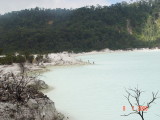
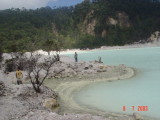
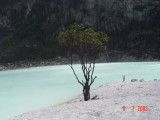
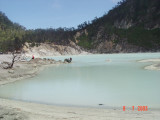
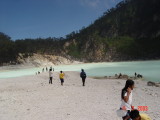
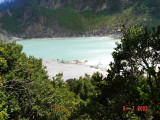
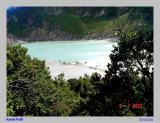

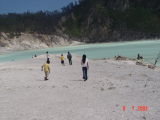
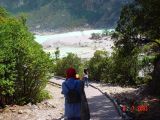
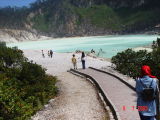
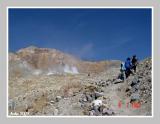
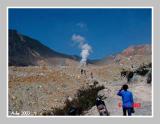
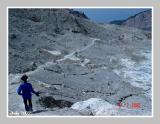
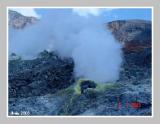
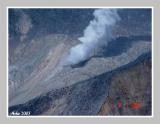
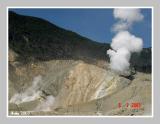
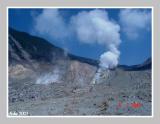
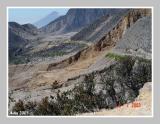
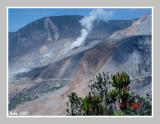

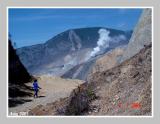
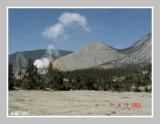
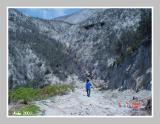
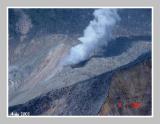
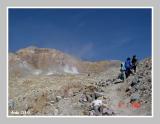
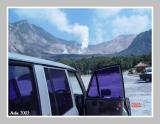
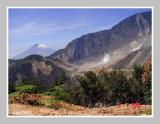
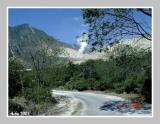
Tidak ada komentar:
Posting Komentar